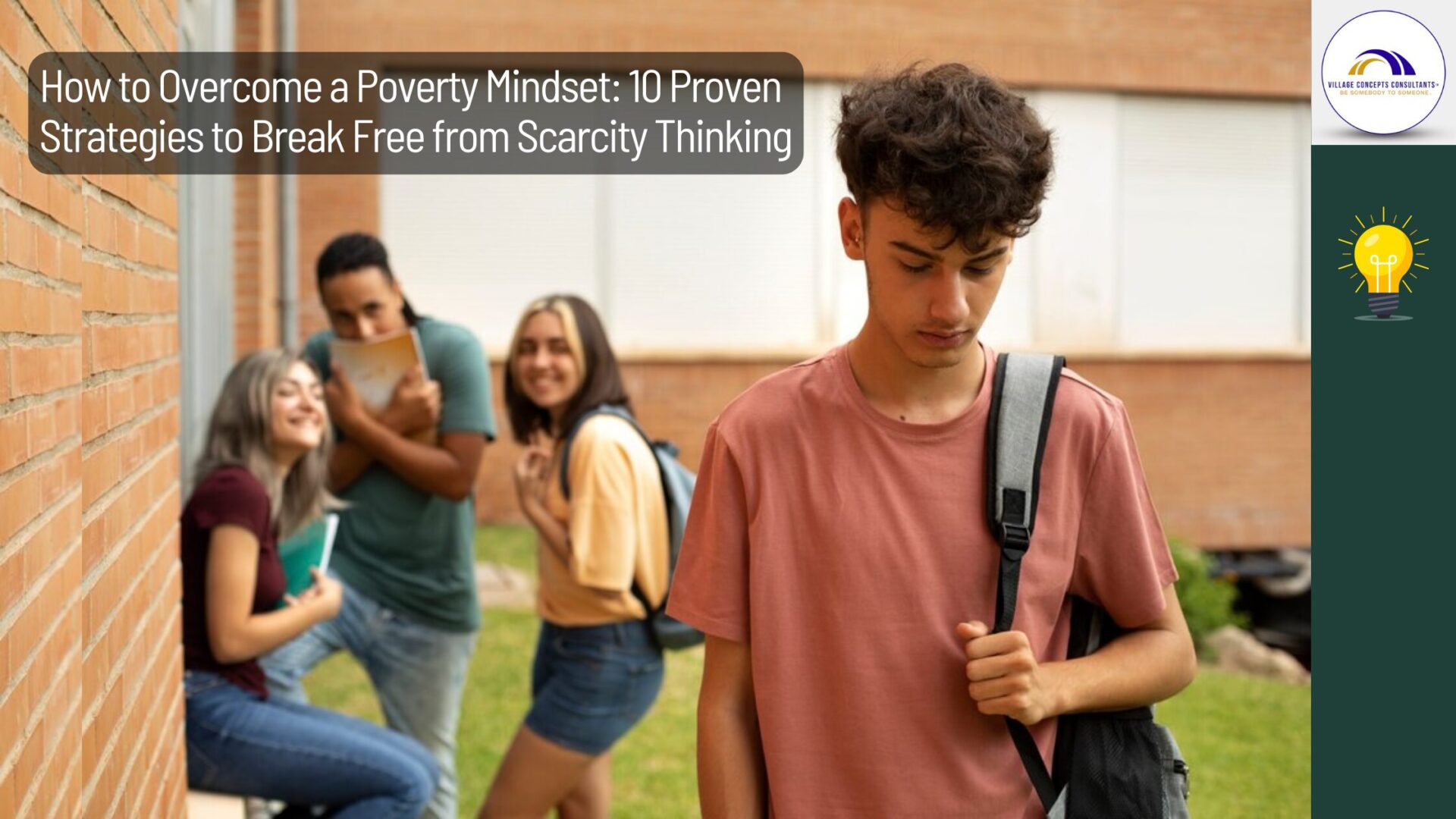How to Overcome a Poverty Mindset: 10 Proven Strategies to Break Free from Scarcity Thinking
Is poverty is a mindset limiting your potential? This ultimate guide reveals 10 science-backed strategies to transform scarcity thinking into abundance. Perfect for educators teaching with poverty in mind, professionals, and anyone seeking financial freedom.
Understanding the Poverty Mindset
The concept that poverty is a mindset has gained significant attention in psychology and education circles. Unlike economic poverty—which refers to material lack—a poverty mindset represents deeply ingrained thought patterns that perpetuate cycles of scarcity, regardless of actual financial circumstances.
Research shows these mental models develop through:
- Childhood experiences with scarcity
- Generational patterns of financial struggle
- Societal messaging about class limitations
- Educational barriers (effects of poverty on education)
For educators teaching with poverty in mind, recognizing these psychological factors is just as crucial as addressing material needs. Studies on poverty effects on education reveal that students from low-income backgrounds often face invisible cognitive barriers that impact:
- Academic performance
- College attendance rates
- Career aspirations
This comprehensive guide will explore:
- The psychology behind scarcity thinking
- How poverty mindset manifests in education (teaching with poverty and equity in mind)
- 10 actionable strategies for transformation
- Expert resources including Regenia Rawlinson’s groundbreaking work
The Psychology of Scarcity Thinking
1.1 How Poverty Mindset Develops
The idea that poverty is a mindset stems from observable psychological patterns:
- Hyperfocus on Immediate Needs: Scarcity mentality forces constant attention on short-term survival
- Risk Aversion: Fear of loss outweighs potential gains
- Time Discounting: Preference for immediate small rewards over larger future benefits
Neurological studies show chronic financial stress actually changes brain structure, particularly in areas governing:
- Decision-making
- Impulse control
- Future planning
1.2 Generational Patterns
Regenia Rawlinson’s book A Mind Shaped by Poverty: Hidden Reasons for Generational Poverty We Don’t Talk About reveals how:
- Family narratives shape financial beliefs
- Survival behaviors become maladaptive in stable environments
- Hidden rules of economic classes create invisible barriers

Poverty Mindset in Educational Settings
2.1 The Classroom Impact
When engaging students with poverty in mind, educators observe distinct patterns:
Cognitive Effects:
- Reduced working memory capacity under stress
- Lower executive function performance
Behavioral Signs:
- Hesitation to ask for help
- Avoidance of challenging tasks
Emotional Markers:
- Heightened sensitivity to perceived slights
- Defensive reactions to feedback
2.2 Equity-Focused Solutions
For teaching with poverty and equity in mind, research recommends:
Instructional Strategies:
- Explicit skill-building for executive functions
- Process-focused praise over outcome praise
Classroom Culture:
- Normalizing help-seeking behavior
- Making middle-class norms explicit
📚 Resource: Reaching and Teaching Students in Poverty provides actionable frameworks.

10 Proven Strategies to Rewire Your Mindset
3.1 Cognitive Restructuring Techniques
- Abundance Audits
- Daily practice of identifying existing resources
- Shifts focus from lack to opportunity
- Future Self Visualization
- Neuroscientific studies show this builds patience for long-term goals
- Poverty Mindset Triggers Journal
- Identify situational triggers of scarcity thinking
3.2 Behavioral Changes
- The 24-Hour Rule
- Wait a day before making fear-based financial decisions
- Strategic Relationship Building
- Curate relationships with growth-minded individuals
- Micro-Investment Practice
- Start with small, low-risk investments to build confidence
3.3 Educational Interventions
- Financial Literacy Immersion
- Recommended starting points:
- Budgeting systems
- Credit building
- Passive income concepts
- Recommended starting points:
- Professional Development
- Courses like A Mind Shaped by Poverty help educators develop:
- Trauma-informed practices
- Asset-based language skills
- Courses like A Mind Shaped by Poverty help educators develop:
3.4 Institutional Changes
- Policy Advocacy
- Push for school programs addressing:
- Financial capability
- Entrepreneurial thinking
- Push for school programs addressing:
- Community Partnerships
- Connect students with:
- Mentorship programs
- Internship opportunities
- Connect students with:

Expert Resources for Transformation
4.1 Must-Read Books
📖 A Mind Shaped by Poverty: Ten Things Educators Should Know
- Explores classroom-specific strategies
📖 Teaching with Poverty in Mind
- Research-based instructional approaches
4.2 Professional Development
🎓 Overcoming Poverty Mindset Course Series
- Module 1: Identifying Scarcity Patterns
- Module 2: Building Abundance Practices
- For professionals supporting mindset shifts
From Scarcity to Sustainable Abundance
Breaking free from poverty is a mindset requires:
- Awareness of thought patterns
- Deliberate practice of new behaviors
- Supportive environments
For educators teaching with poverty in mind, this means:
- Implementing trauma-aware practices
- Challenging deficit thinking
Ready to begin your transformation? Explore our:
Which strategy resonates most with you? Share your thoughts below!





